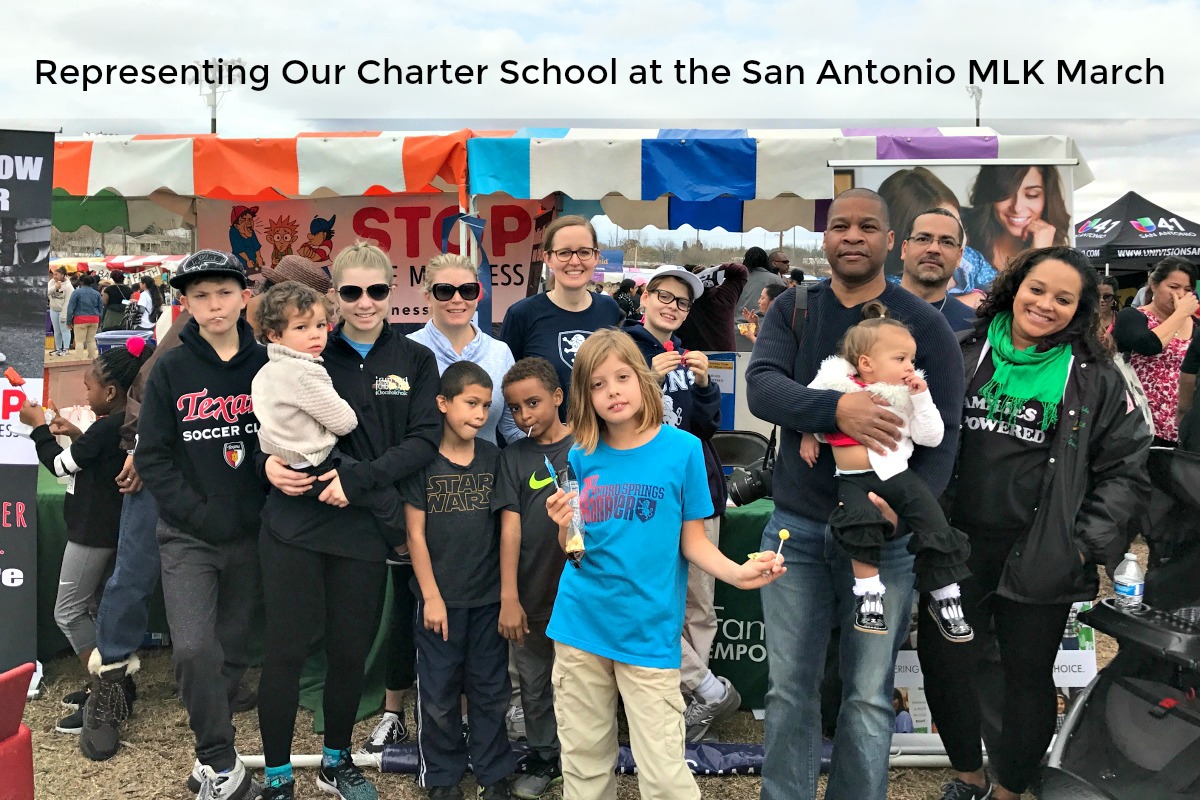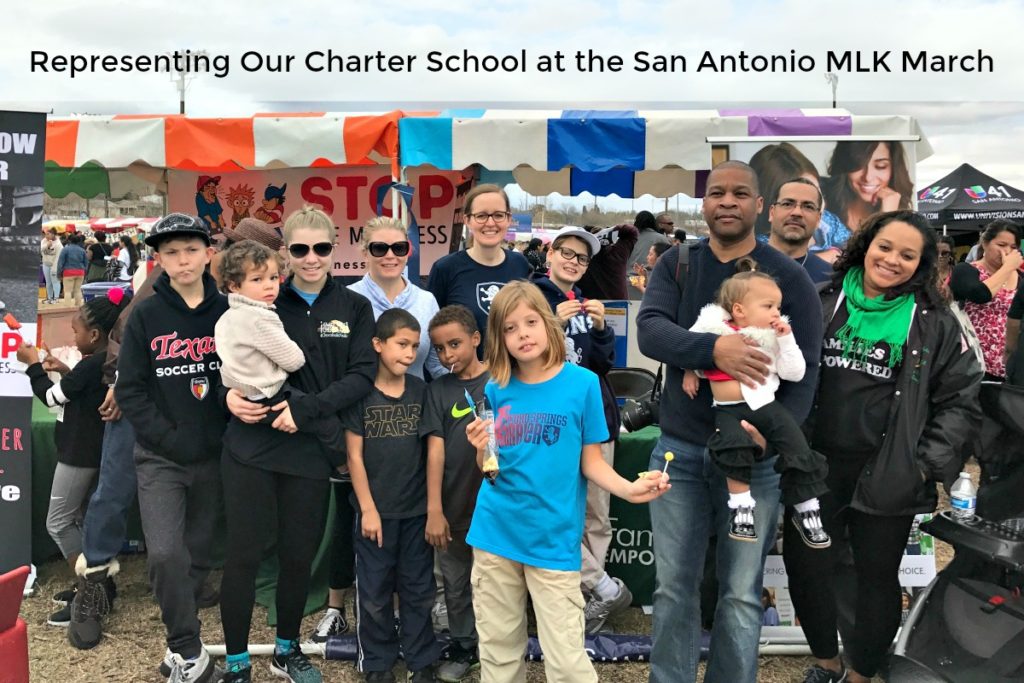
My family and I, plus four other families from Great Hearts Monte Vista, participated in the City of San Antonio’s Martin Luther King, Jr. March on January 15, 2018. It was a meaningful experience to go as a group and walk with so many like-minded people. Along the route and at the park, we saw Eastside landmarks, schools, and community organizations. We have learned practical ways to get to and from the march, and can share those tips so you and your group can participate next year, too.
First, a little background. The San Antonio metropolitan area has an African-American population of 7.1 percent, but hosts an annual MLK march that is one of the largest in the United States. The march started informally in 1968 and became an official city-sponsored event in 1987. The Martin Luther King, Jr. Commission organizes the march and the commemorative program at Pittman-Sullivan Park.
If you are marching as a group, the commission has a simple online form to submit your name, contact information, and group size. The participation form is free and doesn’t impose any obligations on your group, but you will get a helpful email from the parade organizers with tips for participating in the march. In 2018, the email came from a staff member in the office of District 2 Councilman William “Cruz” Shaw.
Several charter schools have made it a tradition to participate in the MLK march.
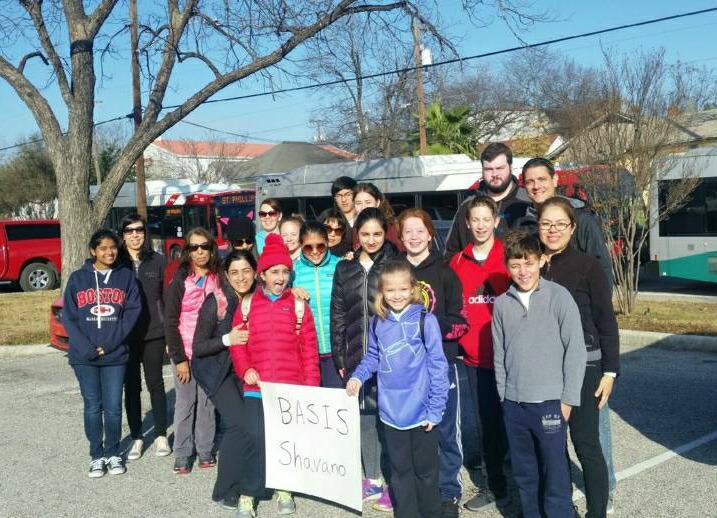

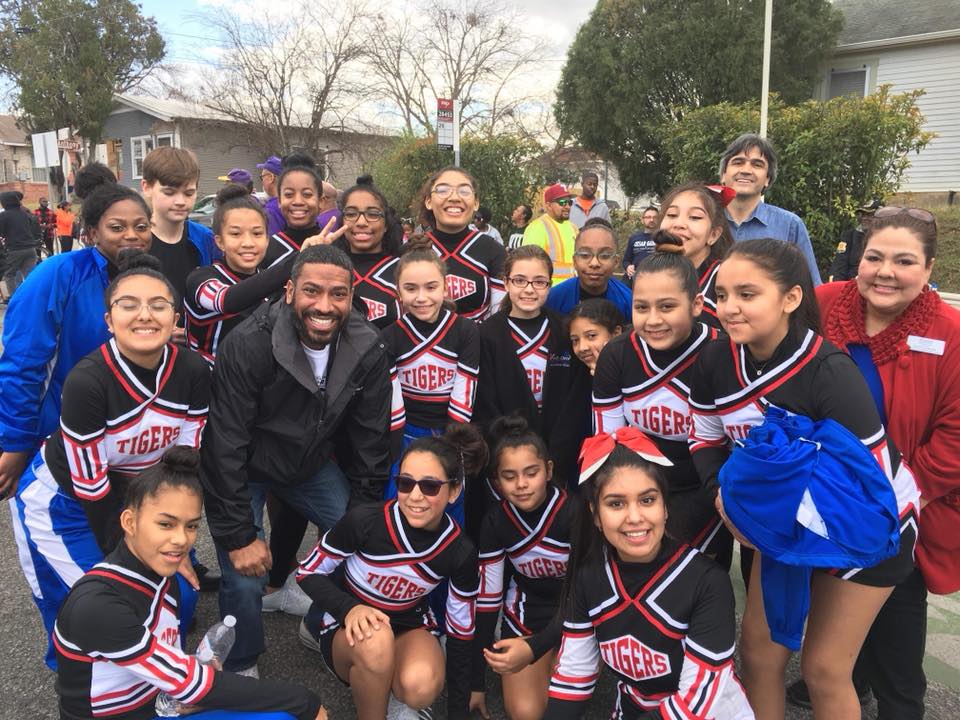
Harmony Science Academy San Antonio
Private schools came to the march, too, including the Circle School, Keystone, and TMI Episcopal.
Nonprofit groups and community organizations also attended the march.
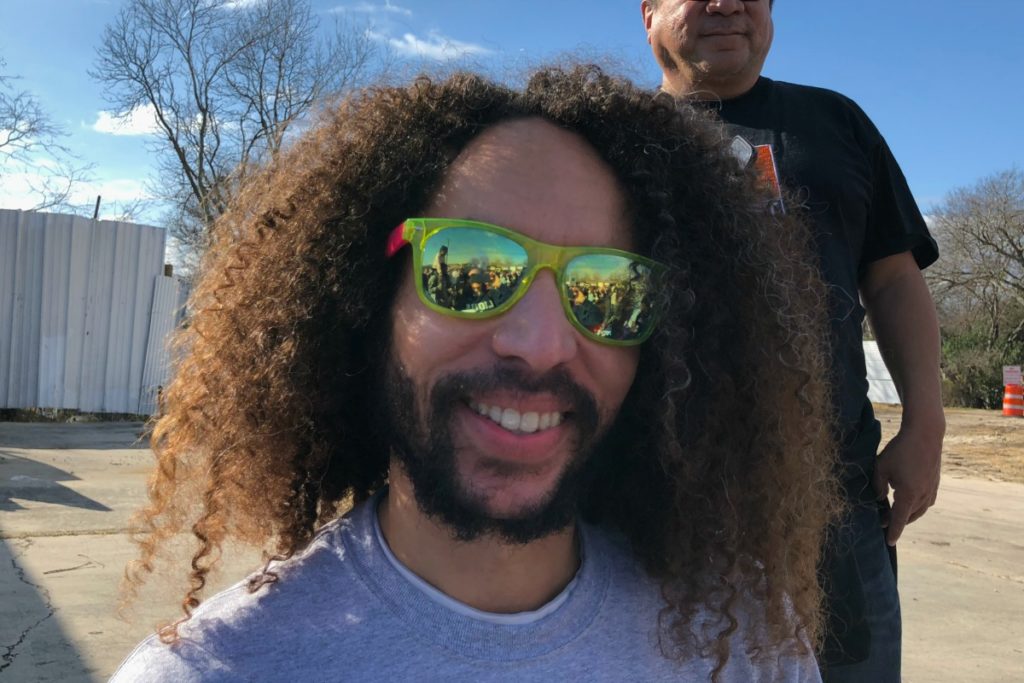
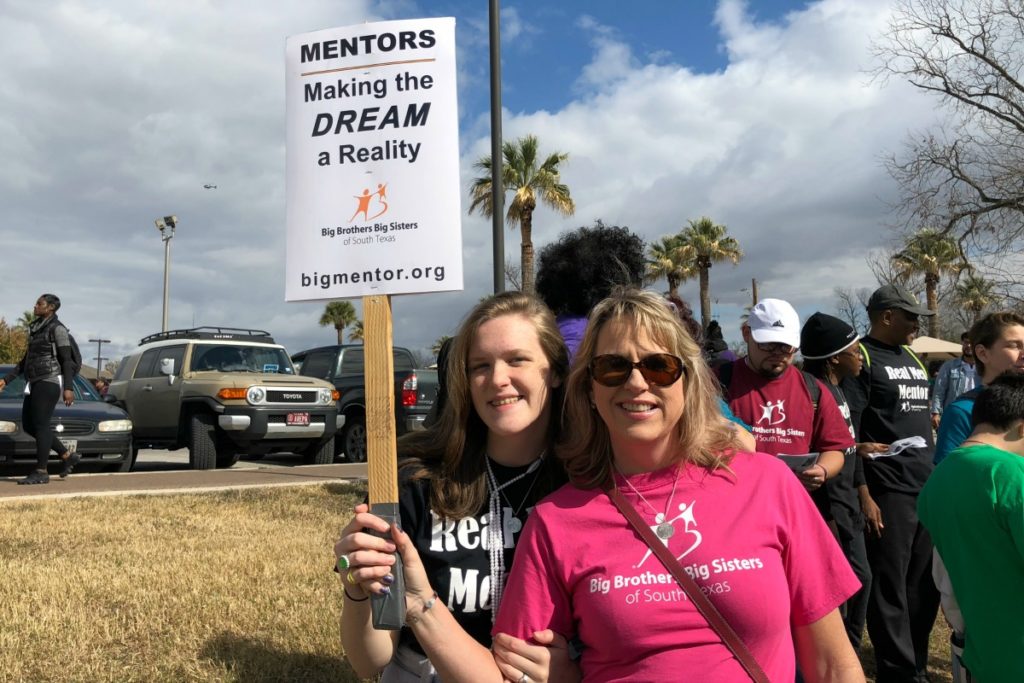
Big Brothers Big Sisters of South Texas

Muslim Children Education and Civic Center (MCECC)
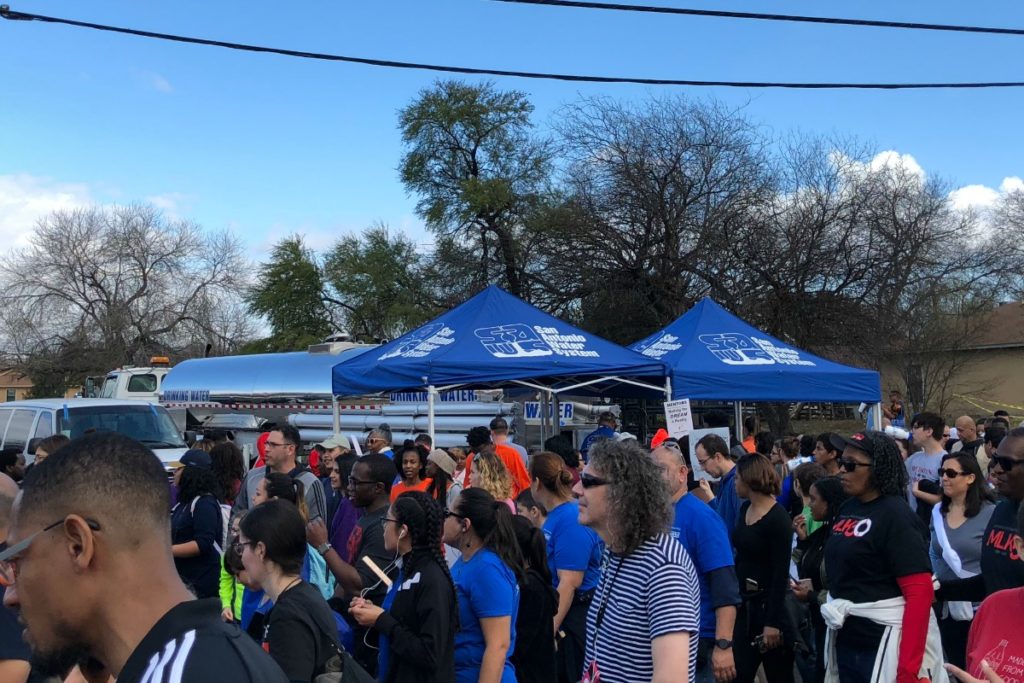
The San Antonio Water System (SAWS) brought a mobile water truck to refresh participants.
Getting to the March
VIA Metropolitan Transit offers a free shuttle service for march participants. The buses pick up at two locations, Freeman Coliseum (near the AT&T Center) and St. Philip’s College, from 8:00 a.m. to 10:00 a.m.
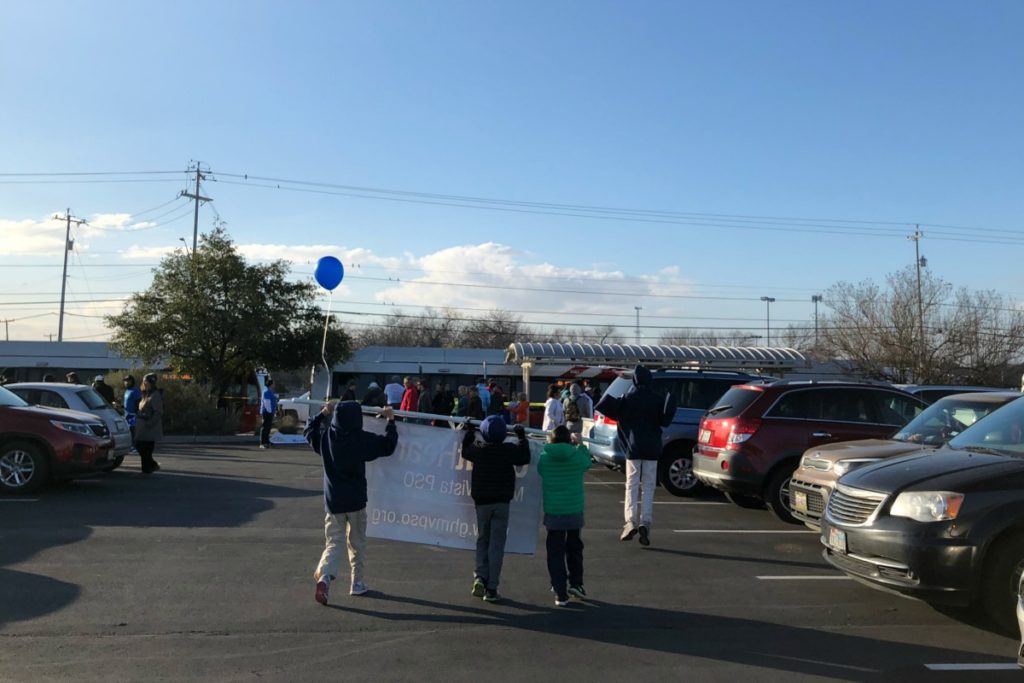
Our group made plans to rally at a point in Lot 1 near the Freeman Coliseum. Starting at around 8:00 a.m., we parked our cars in a group and waited for friends to arrive. At around 9:00 a.m., we walked across the parking lot to the bus line along Houston Street. We brought our strollers, banners, balloons, etc. onto the bus with us. After a short drive to the south and east, the bus dropped us off near the beginning of the march.
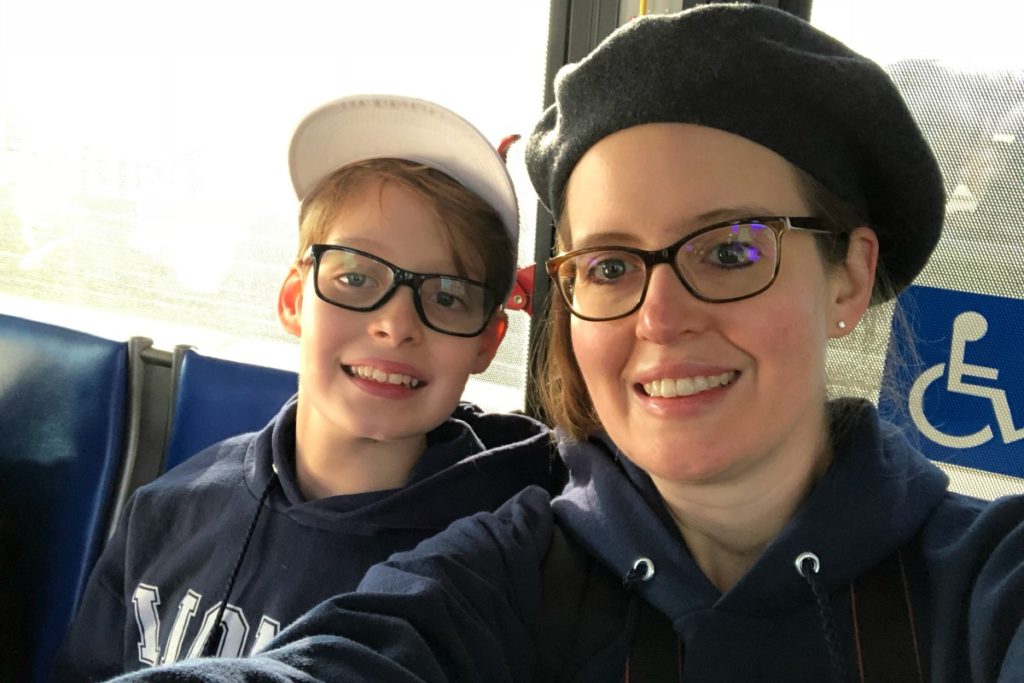
If you are planning transportation for a larger group, you might prefer to meet at your own campus and hire buses to take you to the march. Smaller groups and families can use rideshare apps. Keep in mind that with as many as 300,000 participants, it can be hard for straggling members to find your group at the starting line.
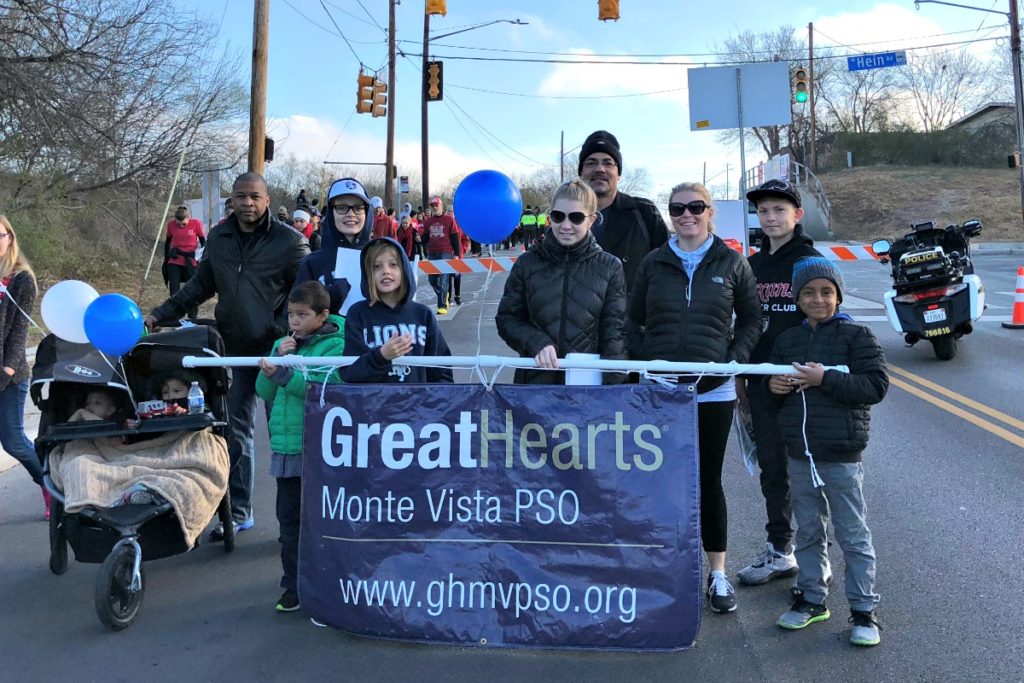
At the end of the march, at Pittman-Sullivan Park, the buses pick up from a line at the northern edge of the park from 12:00 p.m. to 3:00 p.m. The shuttles take passengers back to either Freeman Coliseum or St. Philip’s College—look at the sign on the bus to make sure you get on the right kind of shuttle.
MLK March Route
The march route is 2.75 miles long and moves from east to west along Martin Luther King Drive. The route is mostly flat, with a slight rise for the last mile. The official start time is 10:00 a.m., but it takes a few minutes before the groups in the middle or end of the stack get underway.
The route passes by some Eastside landmarks.

The march route begins near Martin Luther King Park and the Boys and Girls Club of San Antonio—Eastside.
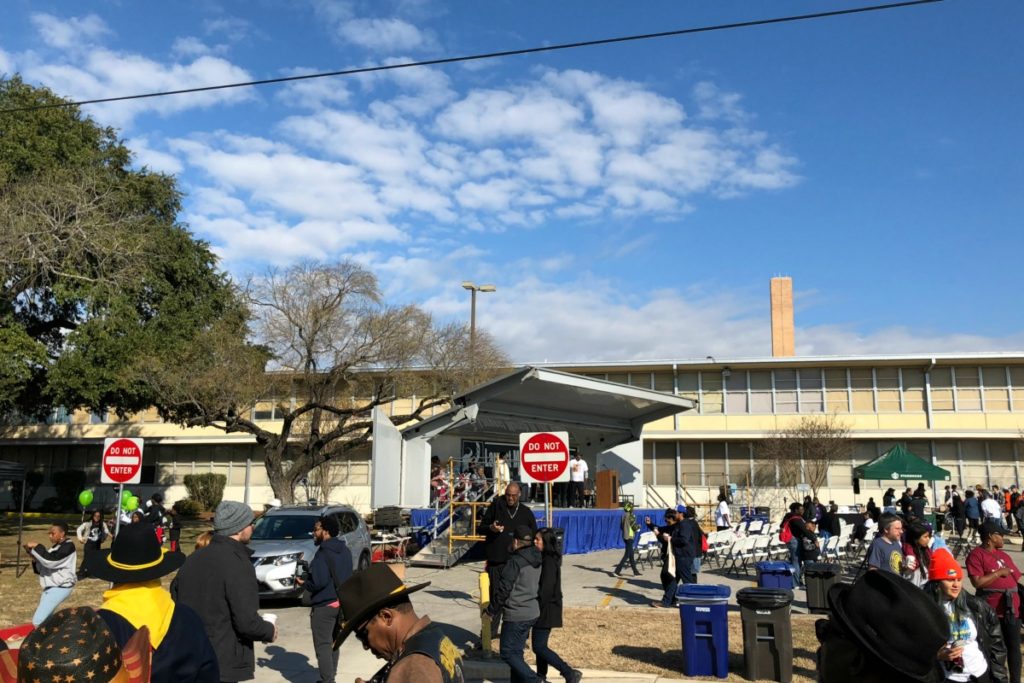
At San Antonio ISD’s Martin Luther King Jr. Academy, a small stage hosted music, prayers, and speeches—including remarks from Mateen Diop, principal at Sam Houston High School.
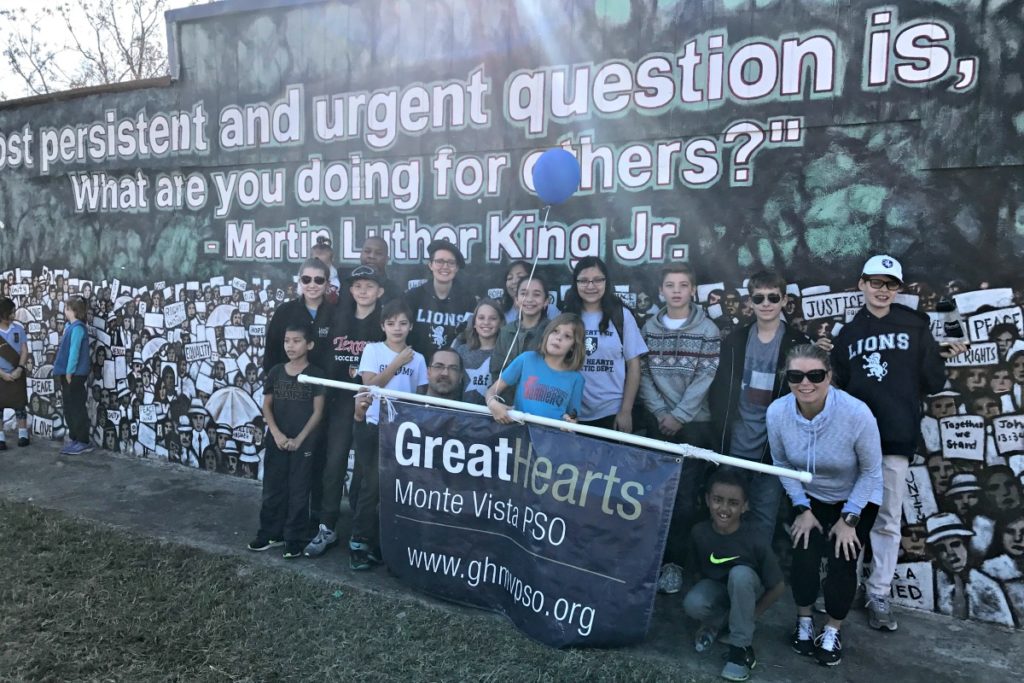
Our Great Hearts Monte Vista group posed in front of a mural at Greater Faith Institutional Church.
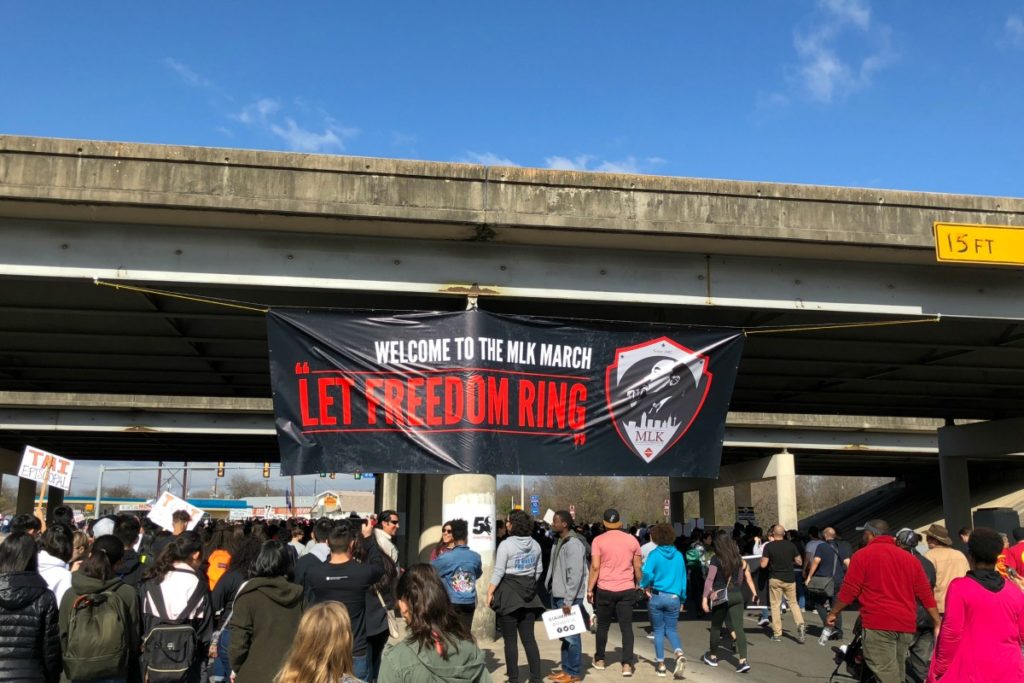
The I-10 overpass featured a large banner.
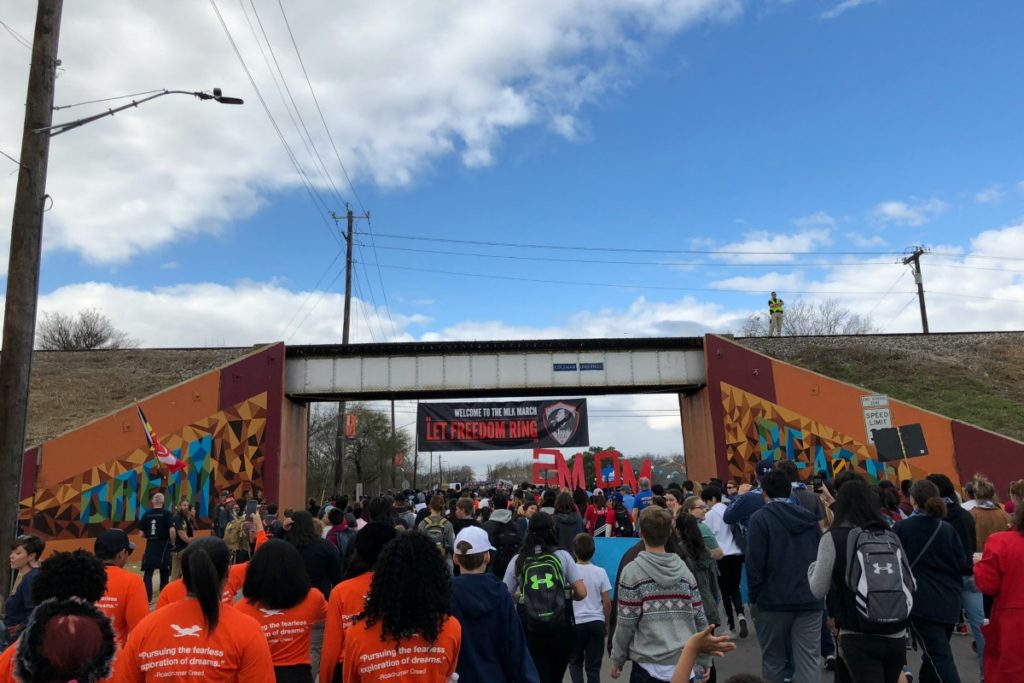
“Dream” and “Peace” murals at the Coleman Railroad Bridge Underpass were created for the 2016 march.
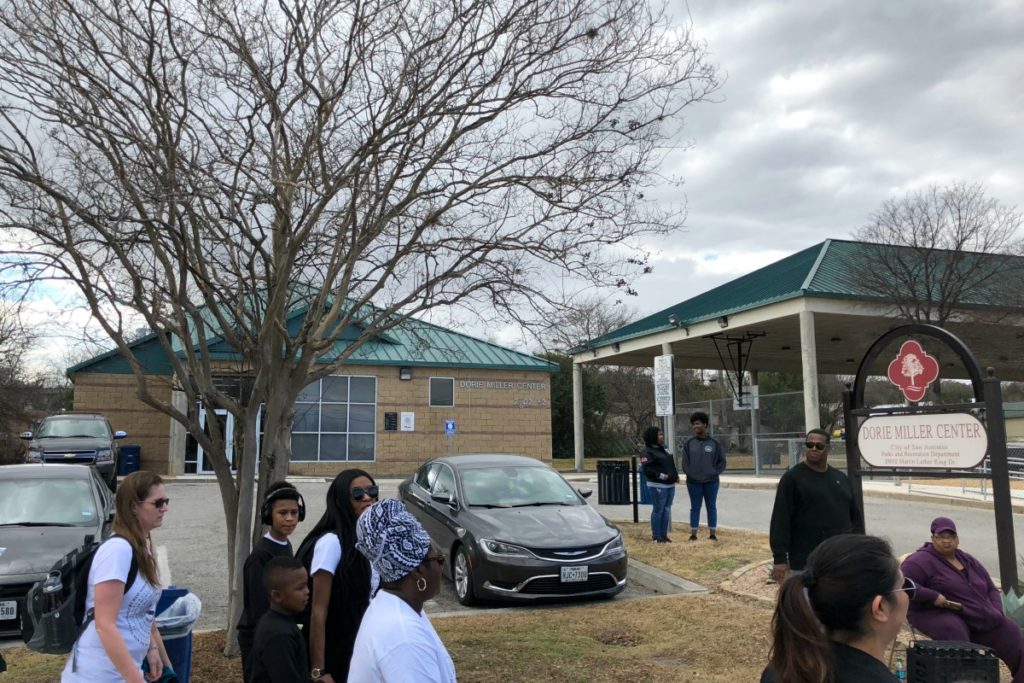
Dorie Miller Community Center is a good place to find bathrooms and water.
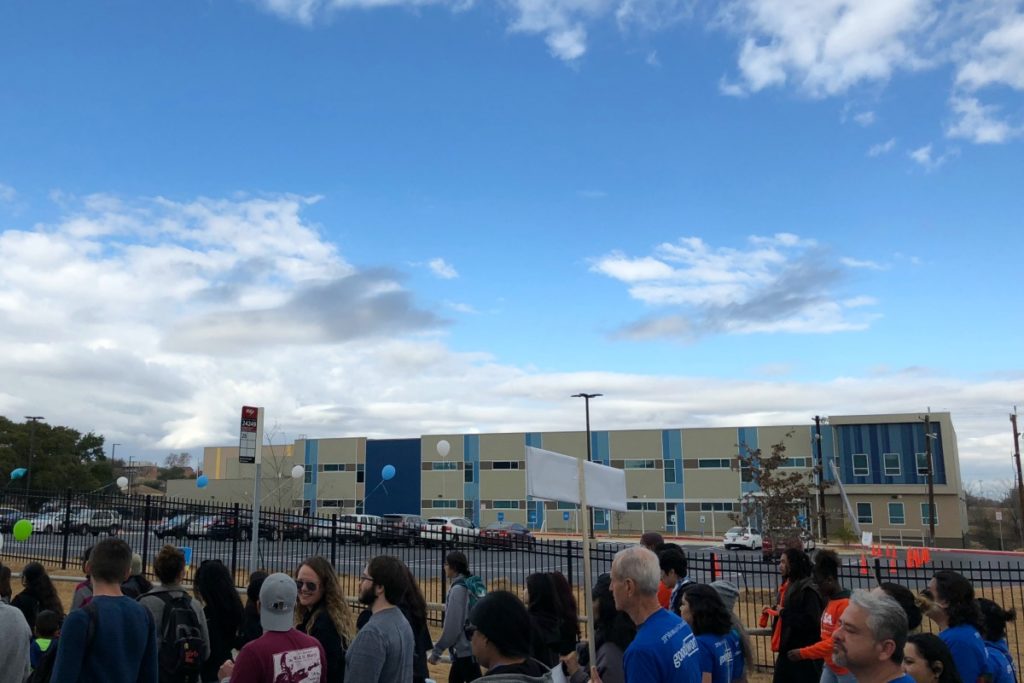
IDEA Eastside is a campus in the IDEA Public Schools network.
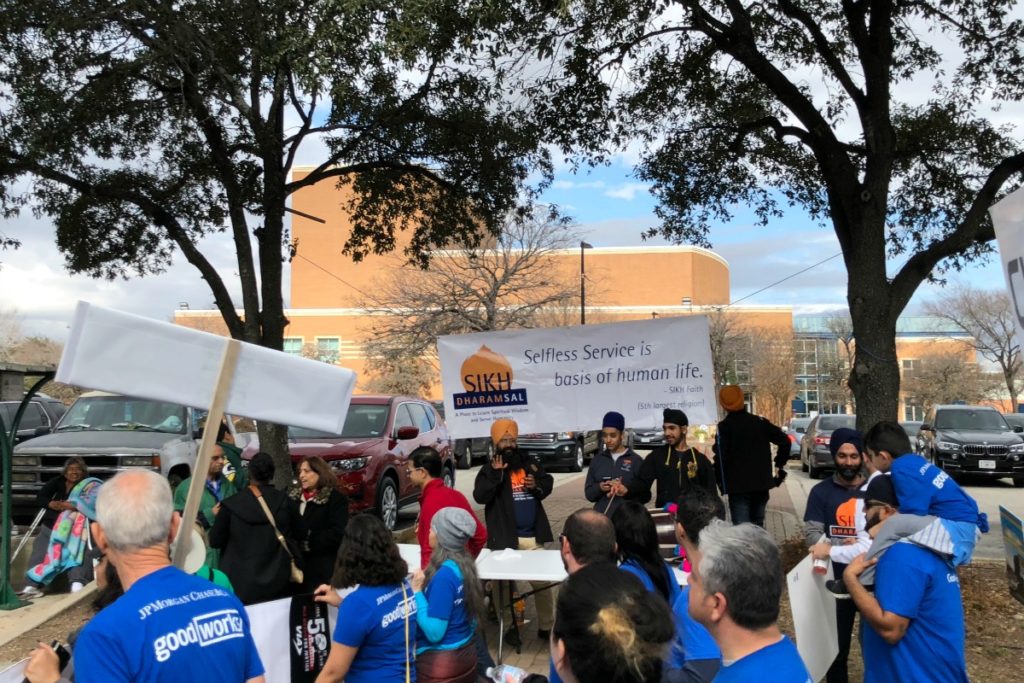
St. Philips College hosted tables for jazz station KRTU 91.7 and Sikh Dharamsal of San Antonio.
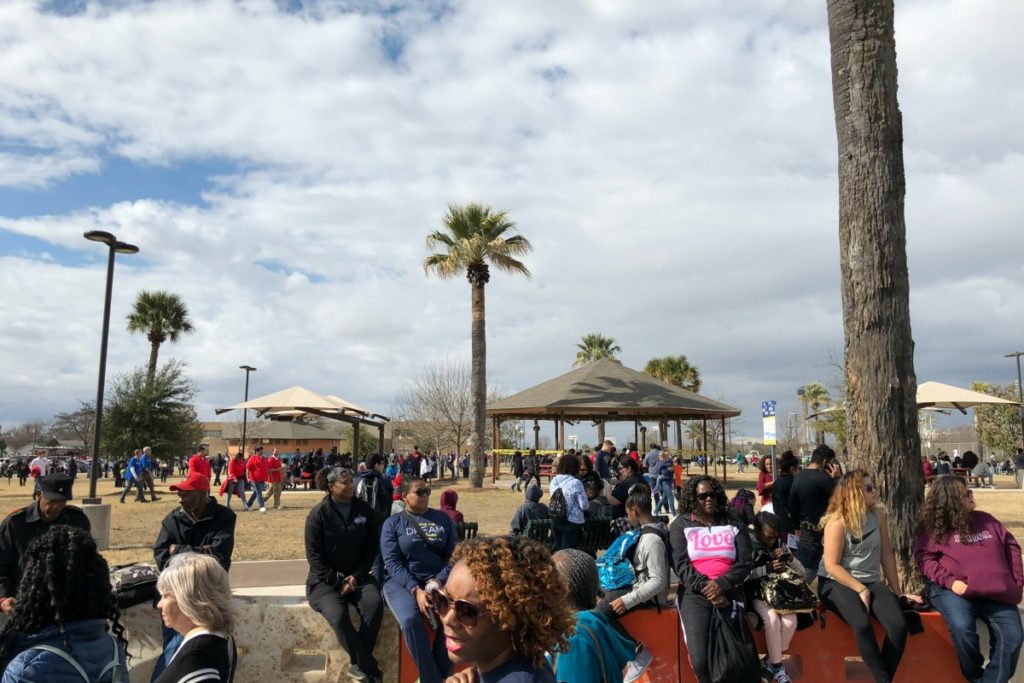
On the same block as Pittman-Sullivan Park, you will find the Davis-Scott Family YMCA and St. Gerard Catholic High School.
Meanwhile, at Pittman-Sullivan Park, the commemorative program began at 11:30 a.m. and continued until 3:30 p.m. The commission honored former mayor Ivy R. Taylor with the Martin Luther King, Jr. Legacy Award. Local elected officials and religious leaders spoke, and journalist Roland Martin presented the keynote.
On MLK Day, the park had a festival atmosphere, with booths for community organizations, schools, and more.
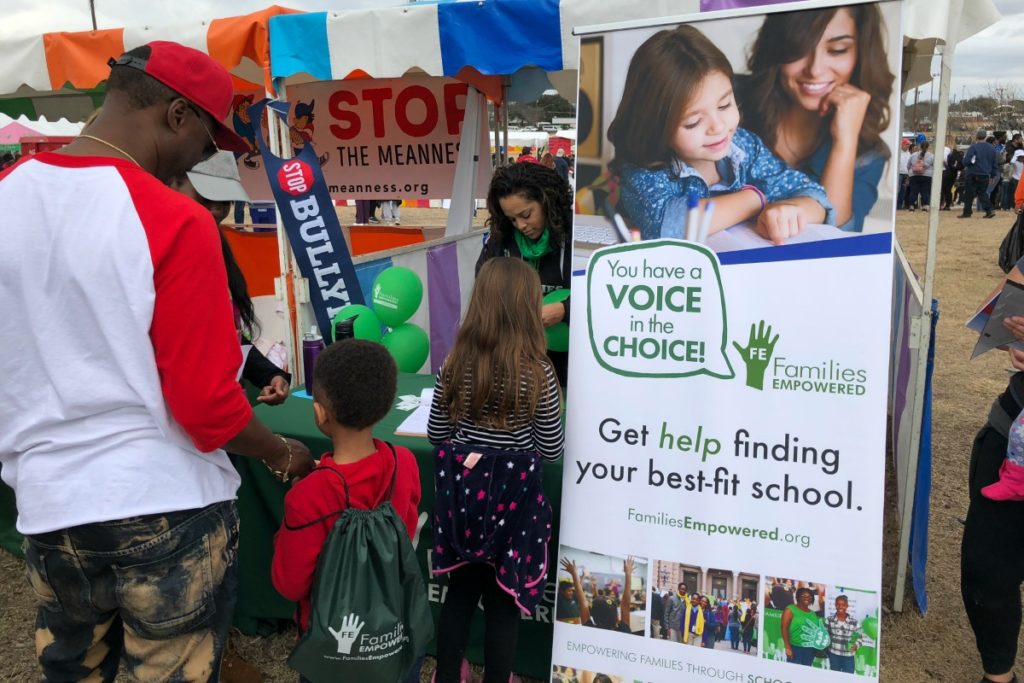
Families Empowered is a nonprofit that helps parents find the right schools for their children. (I serve on their regional advisory board.)
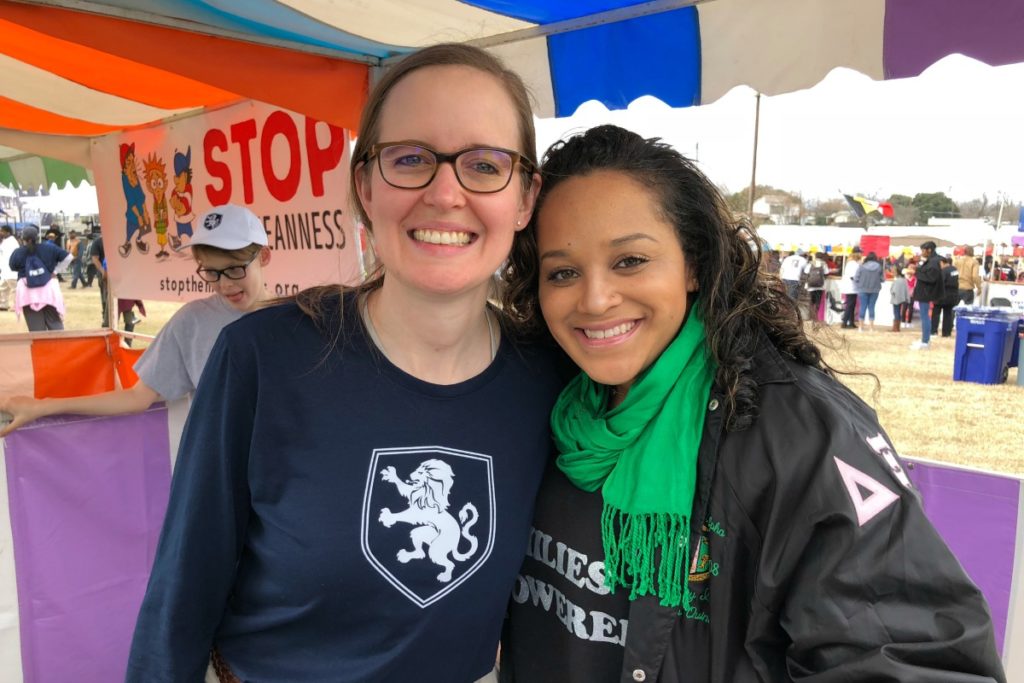
I stopped for a selfie with Families Empowered Regional Director Quincy Boyd.
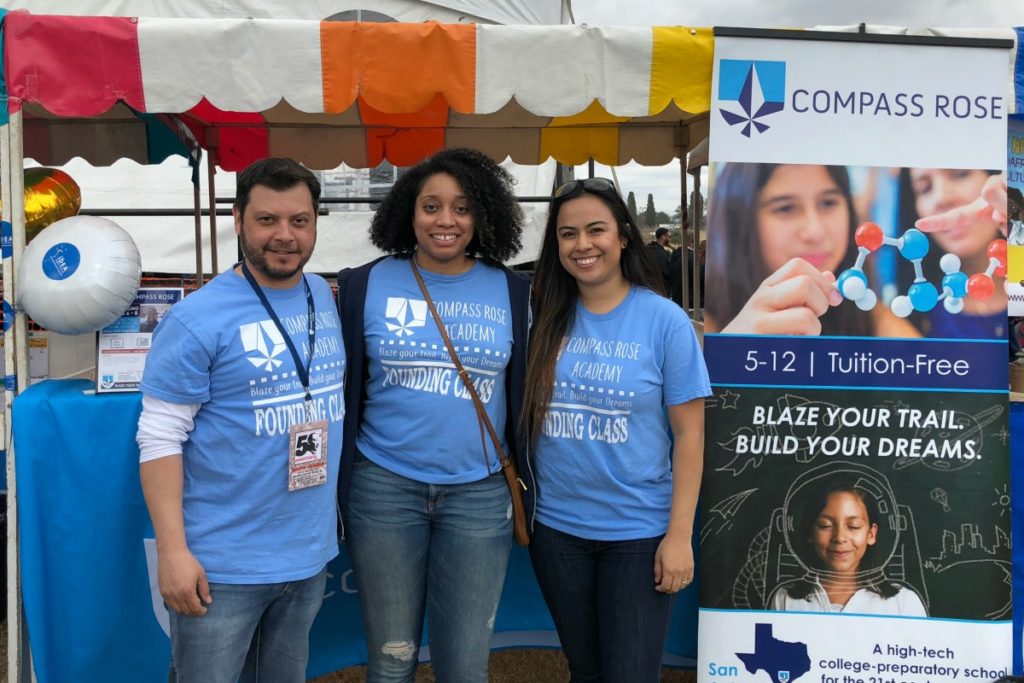
Compass Rose Academy is a tech-oriented charter school located at Brooks.
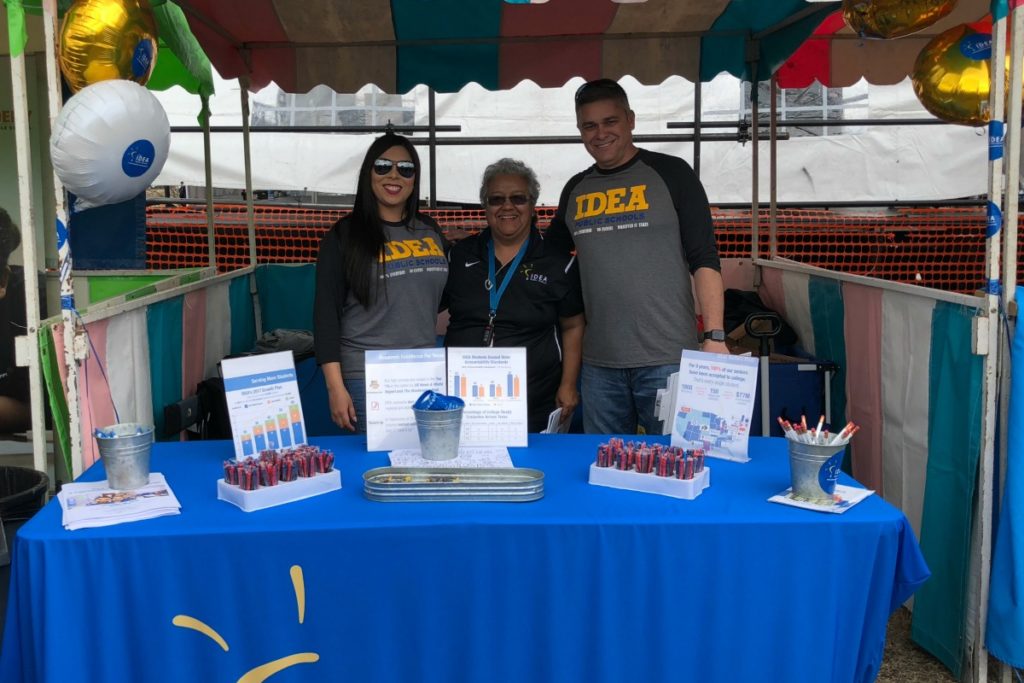
IDEA Public Schools also had a booth at the park to showcase their many campuses, including IDEA Ingram Hills, opening soon.
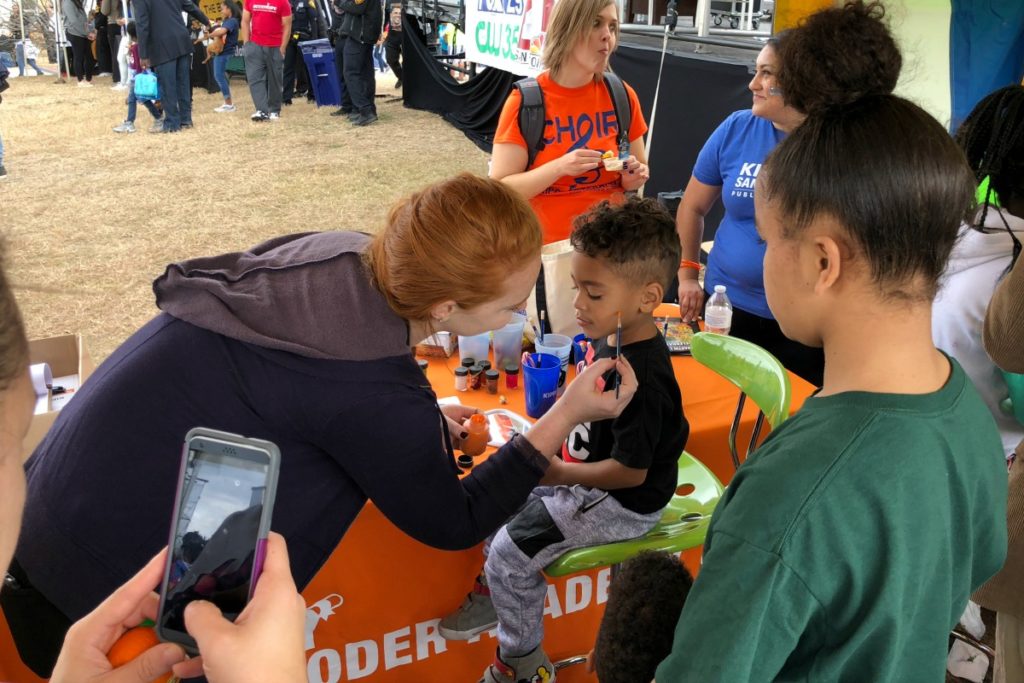
The KIPP San Antonio booth offered free face painting.

The ladies of Alpha Kappa Alapha represented their historic organization, the first sorority established for African-American women.
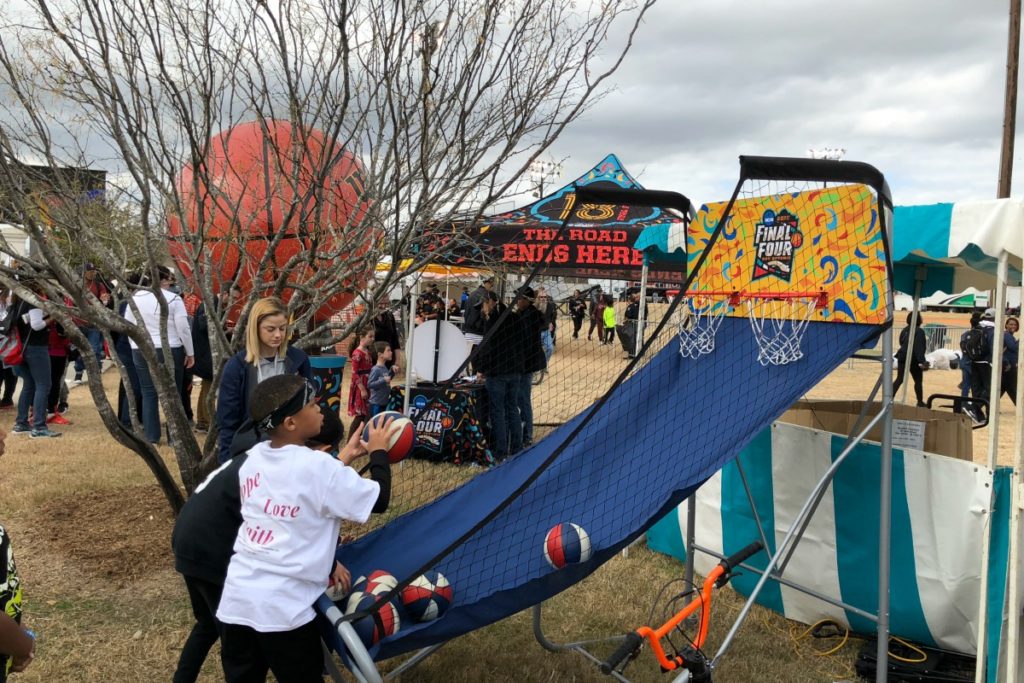
NCAA Men’s Basketball Final Four, which is coming to the Alamodome in March, offered fun activities.
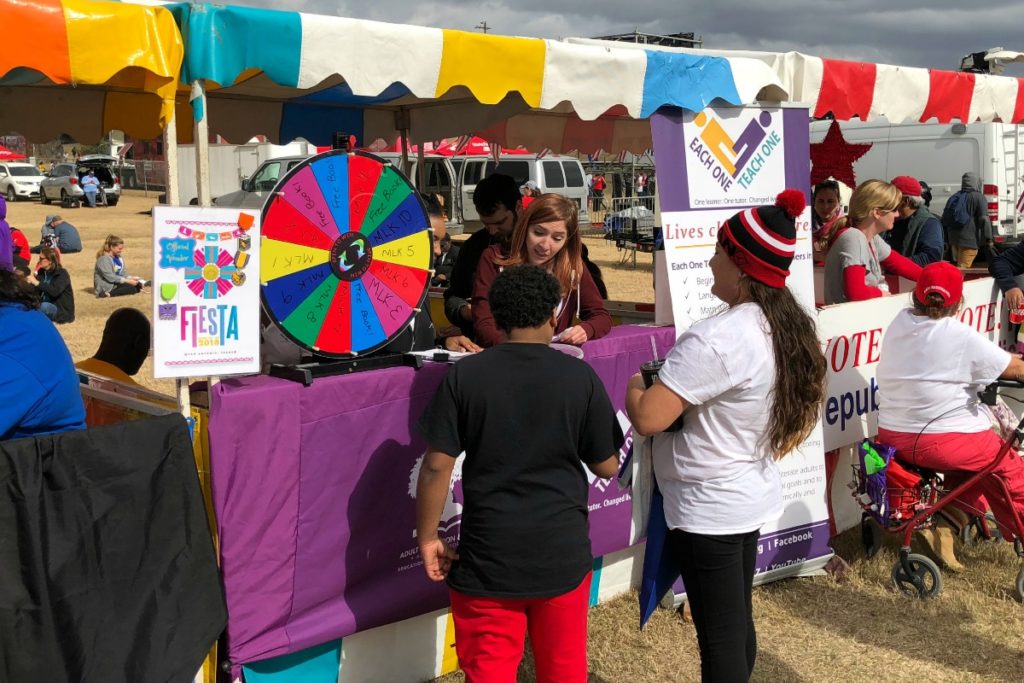
Each One Teach One raised awareness of their adult literacy programs.

Bexar Bibliotech introduced visitors to their digital library services.
Meaning of the March
What does Martin Luther King, Jr.’s legacy mean to the people who marched in San Antonio? As reported in the Express-News, keynote speaker Roland Martin said, “Martin Luther King Jr., for some reason, has been treated as America’s civil rights mascot. On this day, you have folks who have never in their life marched with, agreed with, voted with anything he believed in. But they are real quick to send press releases out or tweet out comments about how great he was.” Do San Antonio’s march participants take time to think about what King’s teachings mean in today’s world?
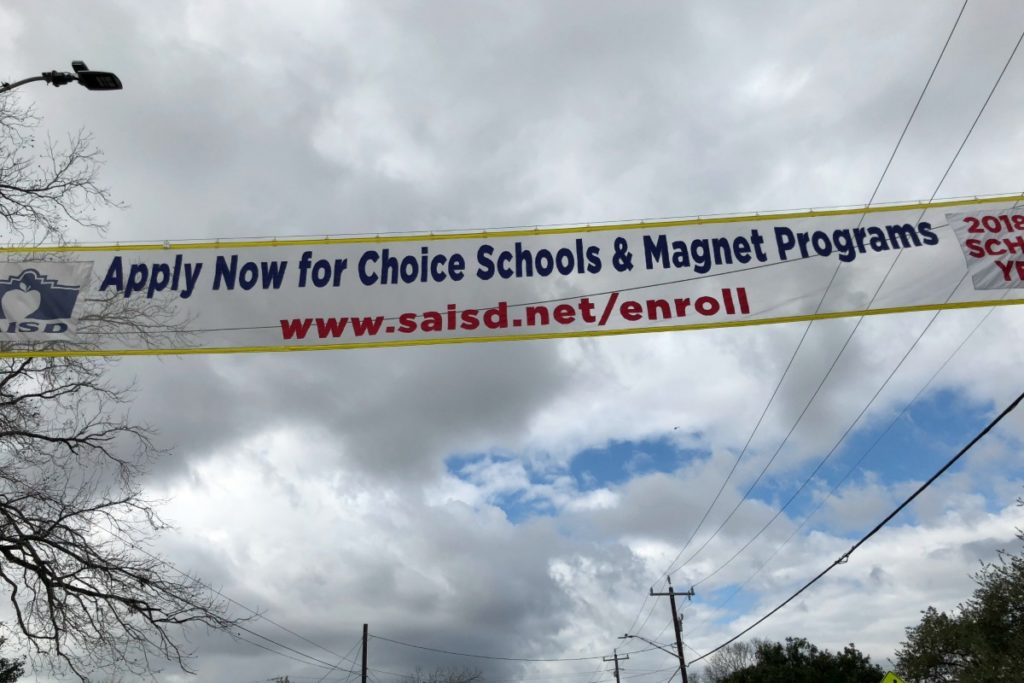
My friends and I marched on MLK Day to represent our public charter schools. Do charter schools advance racial equality in education? The evidence I have seen convinces me that high-quality charter schools offer a benefit to all children, including African-American children. To hear both sides of this debate, watch “Is School Choice the Black Choice?”, a town hall meeting that Martin hosted in October 2016.
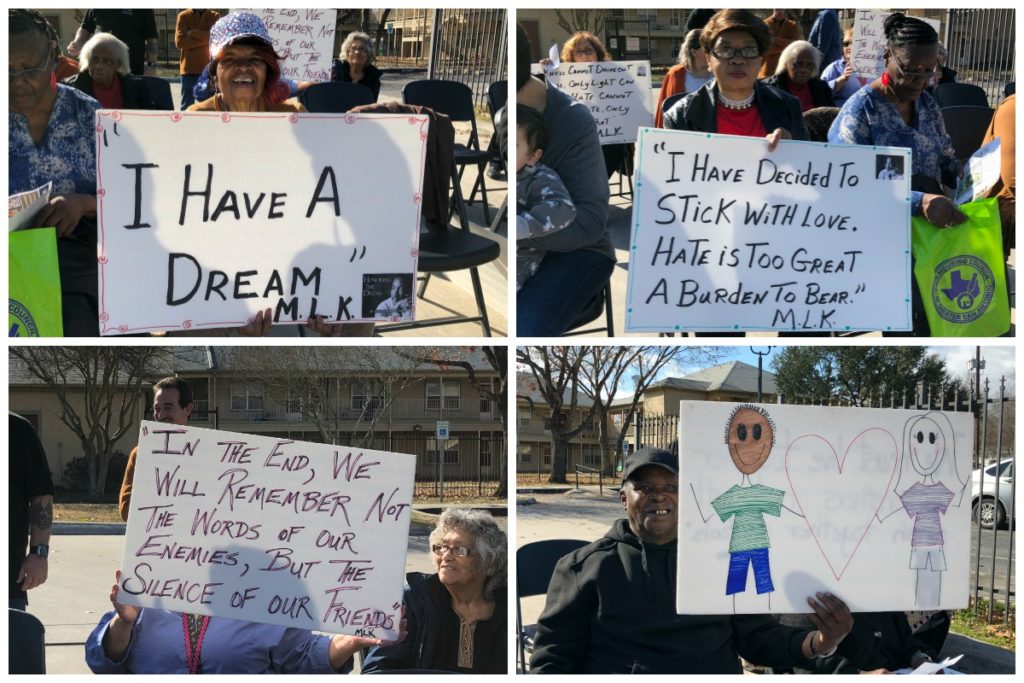
To carry the meaning of the march beyond one day, Dreamweek coordinates events that promote multiculturalism and understanding. Learn more about development on the east side at EastPoint.
The MLK March, with its large turnout, is a proud San Antonio tradition. If you have not participated yet, I hope you will gather a group of friends and join the next one. If you have participated in the march before, please comment to share your advice for first-time marchers.
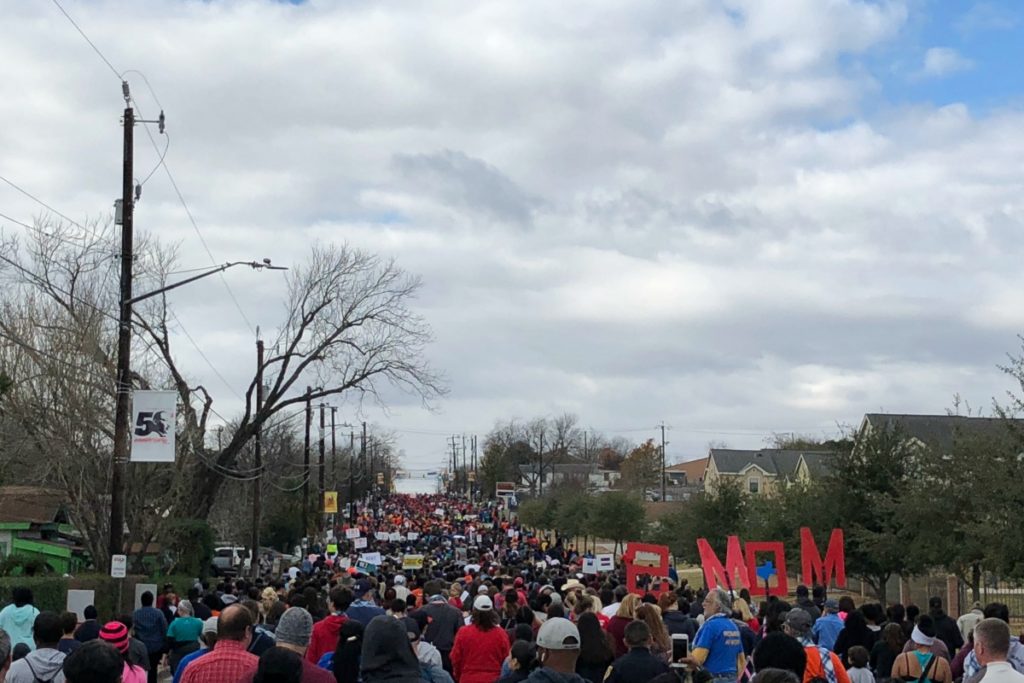
Read more:
- “San Antonio celebrates 50 years marching for King’s dream,” Vincent T. Davis, Bruce Selcraig, and Jasper Scherer, San Antonio Express-News, January 15, 2018
- “Thousands take to the streets in San Antonio’s MLK March – one of the nation’s largest,” Vincent T. Davis, San Antonio Express-News, January 14, 2018
- “The Two Sides of Martin Luther King, Jr.,” Cary Clack, Folo Media, January 15, 2018
- “When the dust settles on MLK Jr. Drive,” Lucas Munson, Folo Media, January 16, 2018
- “Politicians, Activists Join San Antonio’s Community of Marchers on MLK Jr. Day,” Rivard Report, January 15, 2018
- “Former Mayor Taylor Honored with MLK Jr. Achievement Award,” Jeffrey Sullivan, Rivard Report, January 15, 2018
